exec函数族
exec函数族
利用进程空间执行另一份代码
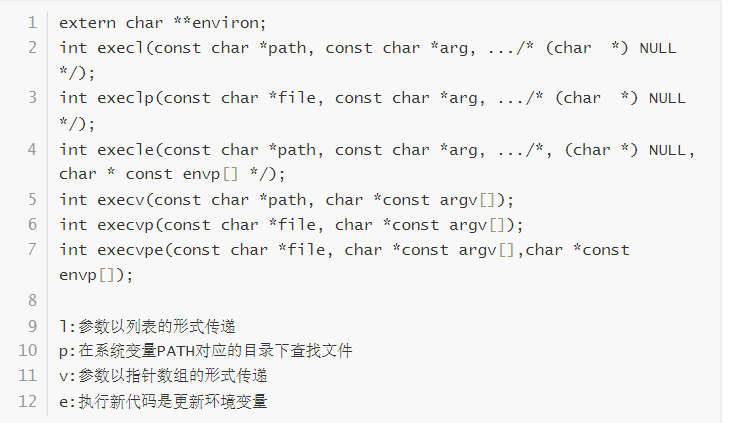
#include "../head.h"
int main(void)
{
char *parg[5] = {
"./hello",
"how",
"are",
"you",
NULL,
};
printf("execl-up\n");
//execl("./hello", "./hello", "how", "are", "you", NULL);
execv(parg[0], parg);
printf("execl-error\n");
printf("execl-down\n");
return 0;
}主函数传参
主函数形式
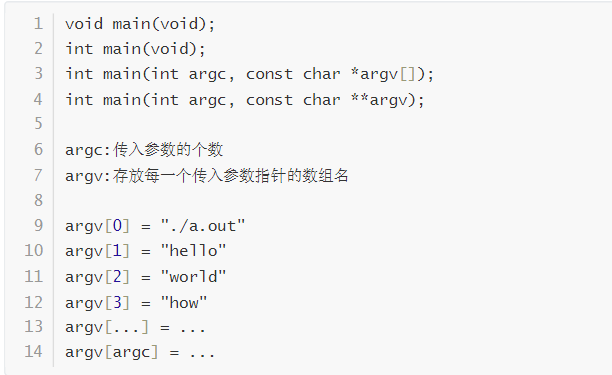
#include "../head.h"
int main(int argc, const char **argv)
{
int i = 0;
printf("hello world\n");
printf("==========\n");
for(i = 0; i < argc; i++)
{
printf("%s\n", argv[i]);
}
//
for(i = 0; argv[i] != NULL; i++)
{
printf("%s\n", argv[i]);
}
return 0;
}system
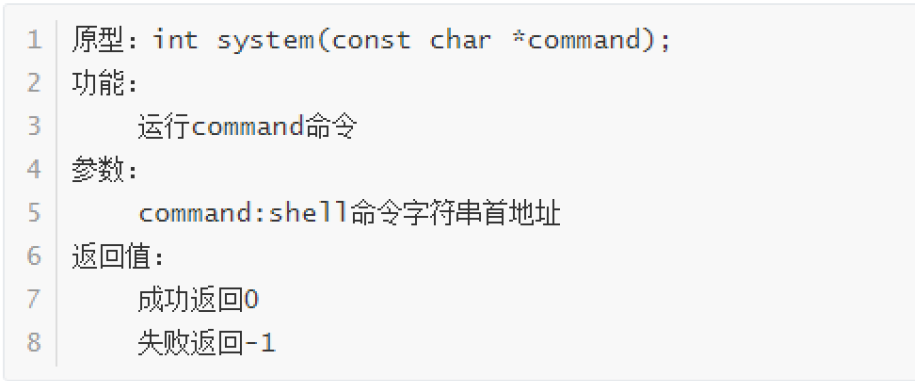
#include "../head.h"
void mysystem(void)
{
pid_t pid;
pid = fork();
if(-1 == pid)
{
perror("fail to fork");
return;
}
if(0 == pid)
{
execlp("ls", "ls", "-l", NULL);
}
wait(NULL); //父子进程同步
return;
}
int main(void)
{
printf("systen-up\n");
mysystem();
printf("system-down\n");
return 0;
}线程
概念
- 线程是一个轻量级的进程
- 线程本质就是一个进程
- 线程和进程不完全一致,轻量指的是内存空间,进程空间和线程空间管理方法不同
进程和线程区别
- 线程本质是进程,线程是任务创建、调度、回收的过程
- 进程空间:文本段、数据段、系统数据段共同构成
- 线程空间:
- 线程必须位于进程内部,没有进程,线程无法独立存在
- 一个进程中的所有线程共享文本段+数据段+堆区,独享栈区
- 线程独享的栈区默认8M
- 一个进程中的多个线程切换调度任务时,资源开销比较小
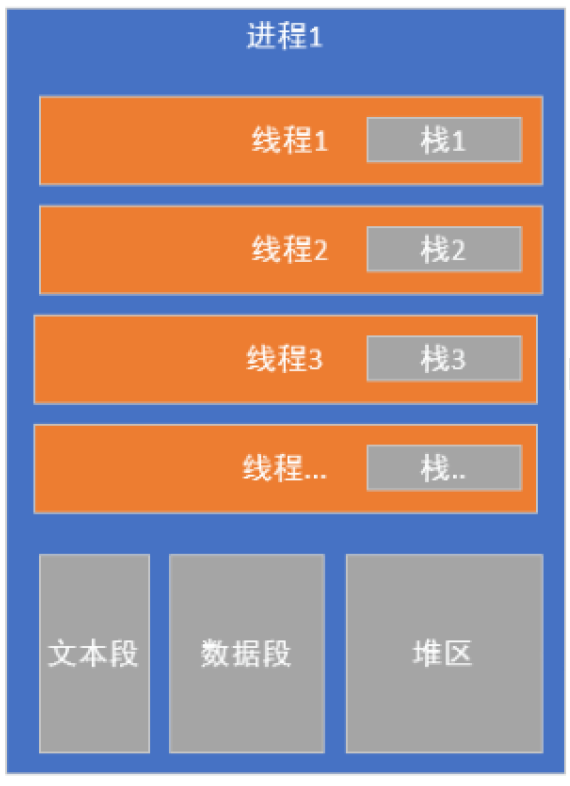
区别总结:
- 线程是CPU任务调度的最小单元,和进程一样都是独立执行的任务
- 进程是操作系统资源分配的最小单元,线程无法独立存在,不是一个独立的空间,只是任务的独立。
多进程和多线程的优缺点
多线程和多进程对比
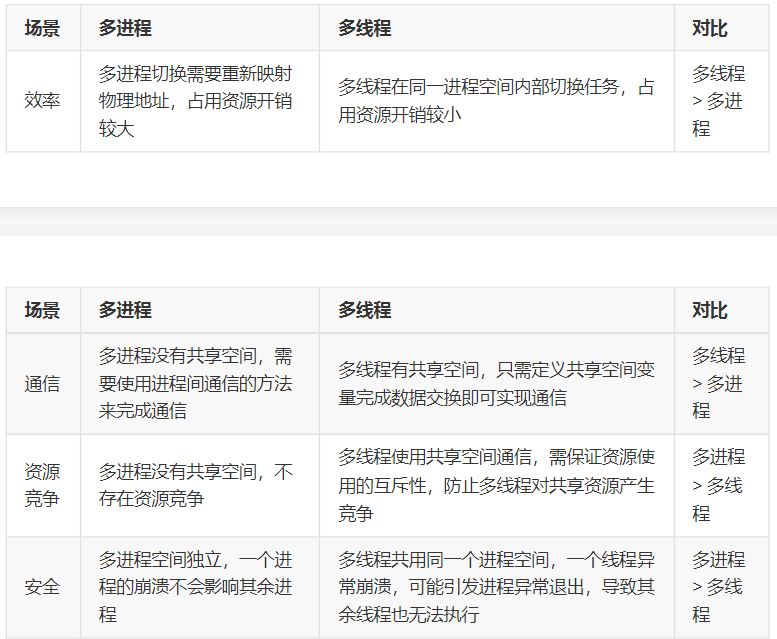
线程的调度
- 与进程调度保持一致
- 宏观并行,微观串行
线程的消亡
- 线程结束需要回收线程空间,否则产生僵尸线程
线程的函数接口
函数接口

pthread_create(创建线程)
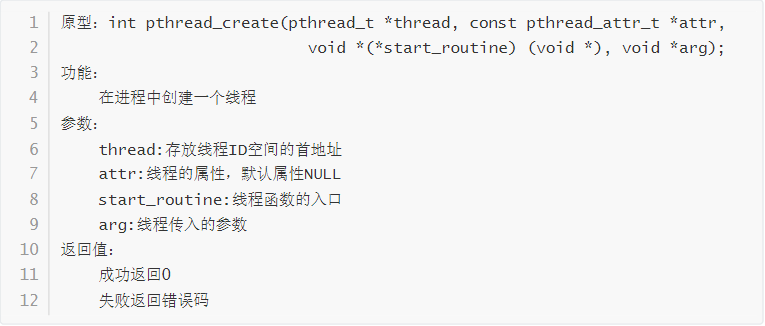
pthread_self(获得线程的ID号)

pthread_exit(结束线程任务)
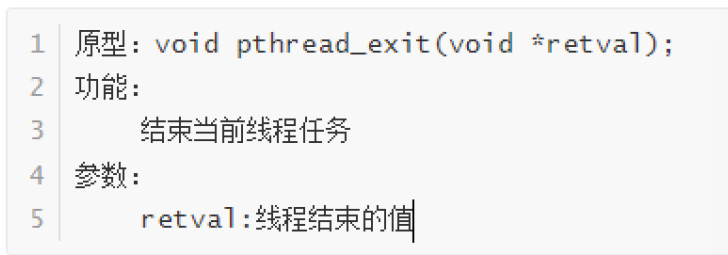
pthread_join(回收线程空间)

#include "../head.h"
void *thread1(void *arg)
{
printf("线程1(TID:%#lx)开始执行\n", pthread_self());
pthread_exit("线程1退出");
return NULL;
}
void *thread2(void *arg)
{
printf("线程2(TID:%#lx)开始执行\n", pthread_self());
pthread_exit("线程2退出");
return NULL;
}
void *thread3(void *arg)
{
printf("线程3(TID:%#lx)开始执行\n", pthread_self());
pthread_exit("线程3退出");
return NULL;
}
int main(void)
{
pthread_t tid[3];
int i = 0;
void *pret = NULL;
void *(*p[3])(void *) = {thread1, thread2, thread3}; //函数指针数组
for(i = 0; i < 3; i++)
{
pthread_create(&tid[i], NULL, p[i], NULL);
}
for(i = 0; i < 3; i++)
{
pthread_join(tid[i], &pret); //回收状态传&pret,不回收状态直接传NULL
printf("线程退出状态:%s\n", (char *)pret);
}
/*
int ret = 0;
pthread_t tid1;
pthread_t tid2;
pthread_t tid3;*/
/*
ret = pthread_create(&tid1, NULL, thread1, NULL);
if(ret != 0)
{
perror("fail to pthread_create");
return -1;
}
printf("线程1(TID:%#lx)创建成功\n", tid1);
ret = pthread_create(&tid2, NULL, thread2, NULL);
if(ret != 0)
{
perror("fail to pthread_create\n");
return -1;
}
printf("线程2(TID:%#lx)创建成功\n", tid2);
ret = pthread_create(&tid3, NULL, thread3, NULL);
if(ret != 0)
{
perror("fail to pthread_create\n");
return -1;
}
printf("线程3(TID:%#lx)创建成功\n", tid3);
pthread_join(tid1, NULL);
pthread_join(tid2, NULL);
pthread_join(tid3, NULL);
*/
return 0;
}